
For July’s 7’s Day theme, we visited Pan Speed and had a chat to Komoriya-san, a true character in the Japanese rotary world. For August’s AE86 celebrations, I wanted to do something along the same lines and bring you an insightful view into the world of Hachirokus. So to wrap up the month, I welcome you to a very special garage on the outskirts of Tokyo that’s as synonymous with the AE86 as Mine’s is with the GT-R.
I hadn’t visited Tec-Art’s since 2007 when I first featured Kamata-san’s N2 Trueno. Don’t ask me why, but I guess it’s one of those things. You cover the scene, we all see each other at events, so stopping by shops for visits becomes less of a priority.

The simple fact is, feature car shoots in Japan usually require you to search out more open locations where you aren’t constrained by the tight confines of a shop or its carpark.
But this time around it was shop and the atmosphere surrounding it that I wanted to capture. If Kamata-san wasn’t too busy, then maybe I could ask him a few questions about his very specific love for the AE86 too.

Situated in an old industrial estate in Yashio, Tec-Art’s hasn’t really changed much since the last time I visited. Except that it looks visibly busier; the shop front was literally gridlocked with customer cars.

In fact, we spent the first 10 minutes of my visit moving cars around so as not to block access to the little apartment building next door. The first takeaway here was me thinking: ‘Damn, business must be good…’

That’s usually the last thought that passes through my mind when I visit tuning shops in Japan these days. Simply put, compared to the golden years of tuning, many of the big names feel a shift in public interest and diminishing business opportunities.
Before even getting started properly, I went for a nose around the side of the Tec-Art’s premises, just to see what was stored back there.

I found the remains of an old scooter along with a couple of AE86s…

…And an Altezza that Kamata-san later told me is a beater he uses for snow driving practise.

The customer cars lined up at the front of the shop were either waiting to be worked on, or ready to be picked up.

Right away it struck me that every car parked out here was in pristine condition.

I almost lost it when I got close this fully-tuned ‘Black Limited’ AE86. For me, this really is the pick of the bunch, and to my surprise there was another example inside. Yep, this was going to be a special day!

One step inside and I was instantly brought back to the autumn day I visited Tec-Art’s 13 years ago.

It was pretty amazing to see that almost a decade and a half on, this place still retains its special aura. In fact, it’s now even cooler, as Kamata-san has been on – how can I put it – a little hoarding spree…

The shop is laid out around a long main section where five or six can be worked on, plus a pair of secondary pits at the side.

The establishment may look a tad cluttered, but it really does exemplify the fine Japanese art of organization for productivity, not meaningless eye-pleasing goals.

At least that’s the best way I can describe it. The guys working in the shop, which include Kamata-san’s younger brother, seem to know where every spare part, tool or new delivery is at any given time.

Here’s that other Black Limited AE86 I mentioned a moment ago. This particular car was recently picked up in Osaka and then sent to Tec-Art’s for a refresh.

And that includes a rebuild of its original twin cam 16-valve 4A-GE engine.

Once completed, the car will be shipped off to its owner in Hong Kong where it will no doubt be the envy of the local AE86 community.

It was at this point that Kamata-san came down for a chat, so I took the opportunity to fire off a few questions…

The first thing I had to ask was perhaps the most obvious: How have AE86-specific tuning approaches changed over the years, and where do you see it all going?
Kamata: “Not surprisingly, this is a question many people ask. It’s pretty simple; owners of these cars have matured and are no longer shooting for the raw and crazier builds like in the old days. It’s a more adult way to thinking about perfecting a car, and it all revolves around making them look as clean as possible – fewer parts but more quality-oriented.”


As we looked over Kamata-san’s N2 race car, which is a wild interpretation of an AE86, he continued…
Kamata: “These cars remain the heroes of our time, but they aren’t what private owners strive to emulate with their own cars. They prefer a more factory feel, clean looks and underneath it all strong performance, but nothing too crazy. Plus, as you know, even if you pour a substantial amount of money into these [4A-GE] engines, they will still make less power than most new cars out there. It’s more about the feel and experience – and sound – than anything else.”

That led me to ask whether Tec-Art’s still have customers that tune their cars for drifting or maybe grip racing, or whether it’s all gone more towards a fast road car style?

Kamata: “We do still get the odd drifter and hardcore racer, but it’s very much about creating the best all-rounder. That means restoring the things that have gone wrong and swapping out old worn out part with newer ones.”

Kamata-san is a busy man, so I let him get on with managing his shop and got back to wandering about the place while trying not to get in anyone’s way. Next thing was to head up the narrow and steep metal staircase that leads to the enclosed mezzanine, which we can call a second floor I guess.

This is the office/display area, and the place where Kamata-san meets with his customers.

The space is nothing short of a monument to the long history Tec-Art’s has in the world of AE86s, as well as a showcase for some of their original products and spare parts.

Not to mention their achievements in racing.

And a little homage to their most famous customer and the car they now look after. This was created after the passing of TRD’s Tadao Sakurai, the man who not only built and engineered Keiichi Tsuchiya’s N2 race car, but also his famous Trueno street car with the signature green carbon fiber hood.
Unfortunately, the real thing wasn’t there on the day I visited, but another of Tsuchiya’s 86s was present. Did you spot it in the pictures yet?

It was back downstairs next, and an expedition into the depths of the workshop…

Kamata-san has been a very busy man over the last decade or so. Knowing very well that Japan’s stocks of good and reliable AE86 parts were drying up, he began collecting pretty much everything he could get his hands on. Starting with engines.

Gearboxes anyone?

There is actually a system for how the parts are organized. What you see lying around is what you’d call the latest findings.

After the parts are cleaned/fixed up, they’re stored on shelves dotted around the second floor. Kamata-san jokingly said that he has to risk his life every time he goes to grab something.

As I exited the dark depths and made my way towards the light, I couldn’t help but note how shops like Tec-Art’s, which back in the day were all-out tuning, are shifting and becoming resto-modders.

The combination of new and old is what allows these guys to meet customer expectations and in the process propel that passion, as well as the whole industry forward.

It brought me back to some of the shops I visited years back in Malaysia, where they have to do with what they are able to find. With Toyota pretty much not supporting these older cars with newly-manufactured spares, it has very much gone in the same direction. It’s a daily hunt for securing various pieces and doing the best with what can be fixed. The AE86 has pretty much become a true classic.

Nice pictures adorning the workshop’s nooks and crannies.

Did you end up spotting Keiichi Tsuchiya’s other 86?

Yep, it’s this new-gen ZN6, one of a few daily drivers the ‘Drift King’ keeps in his arsenal of cars, and an apt way to wrap up this tour of a legendary shop and 86 coverage for August.
I hope you enjoyed taking this wander around Tec-Art’s with me, and if you like this sort of format maybe let me know in the comments what other JDM shops you’d like me to visit in the future.
Dino Dalle Carbonare
Instagram: dino_dalle_carbonare
dino@speedhunters.com

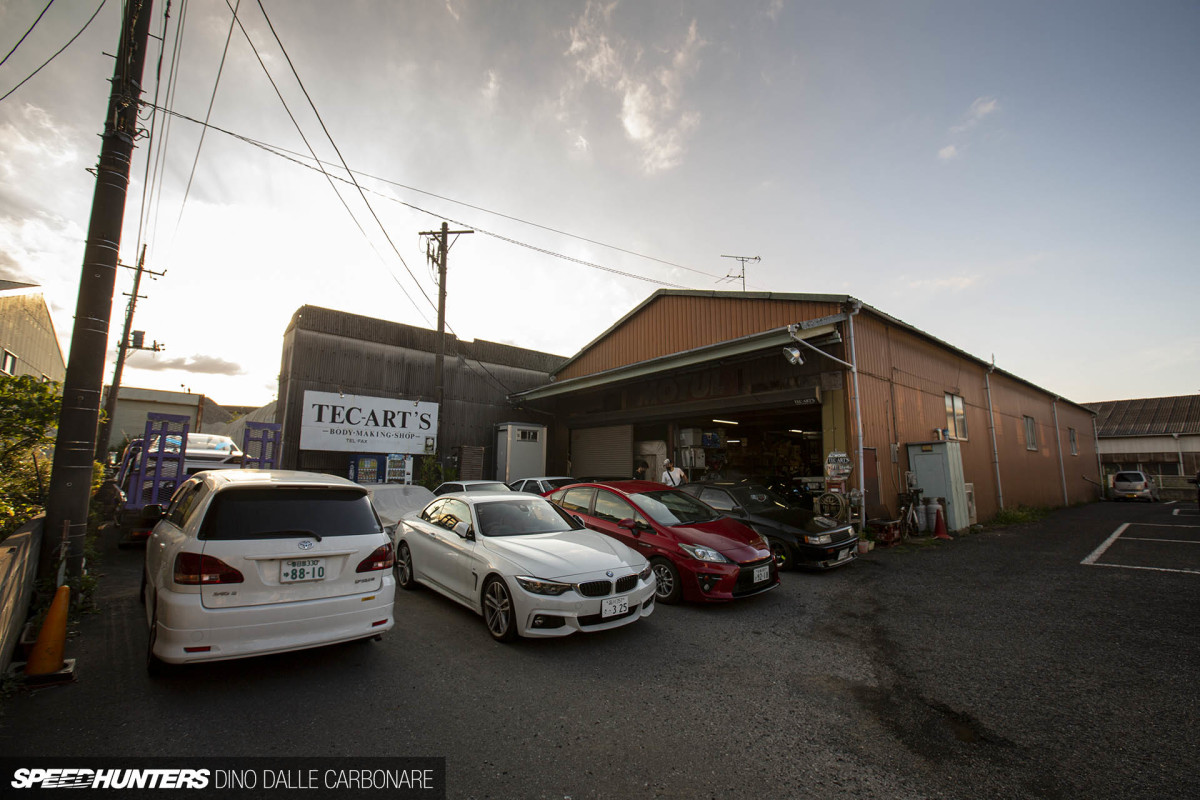
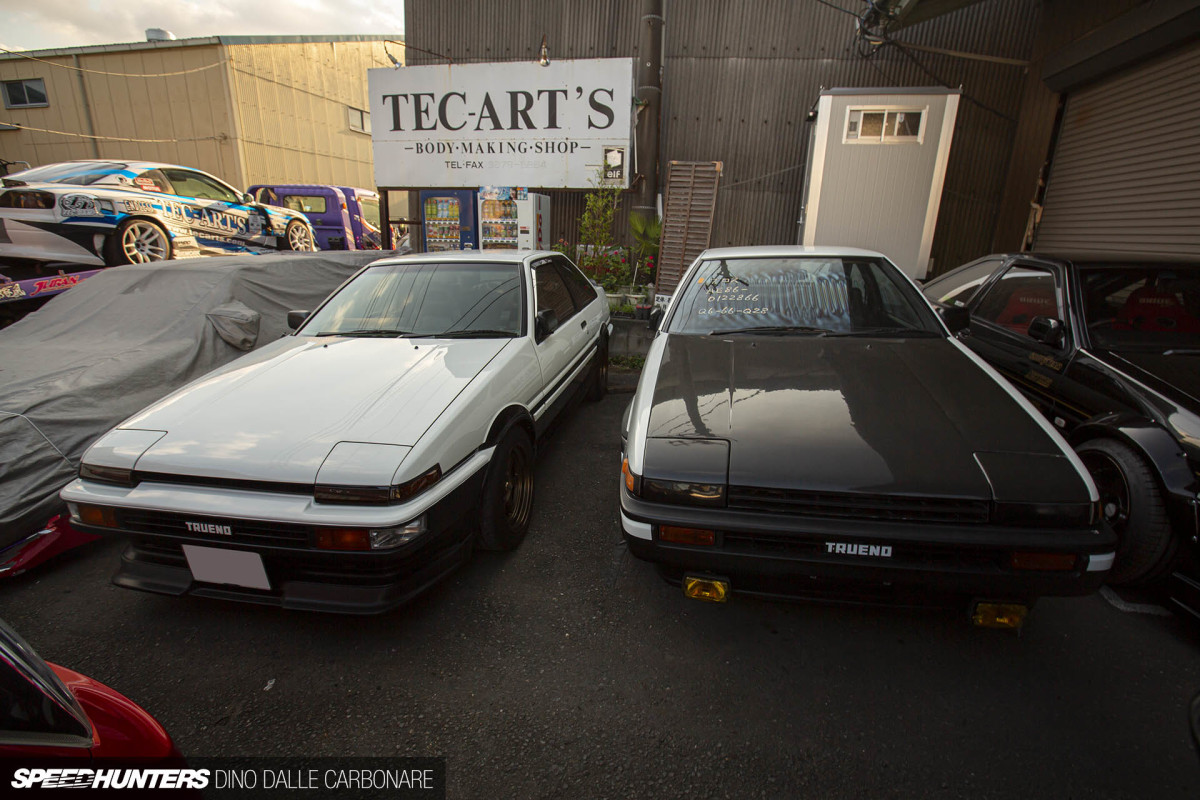
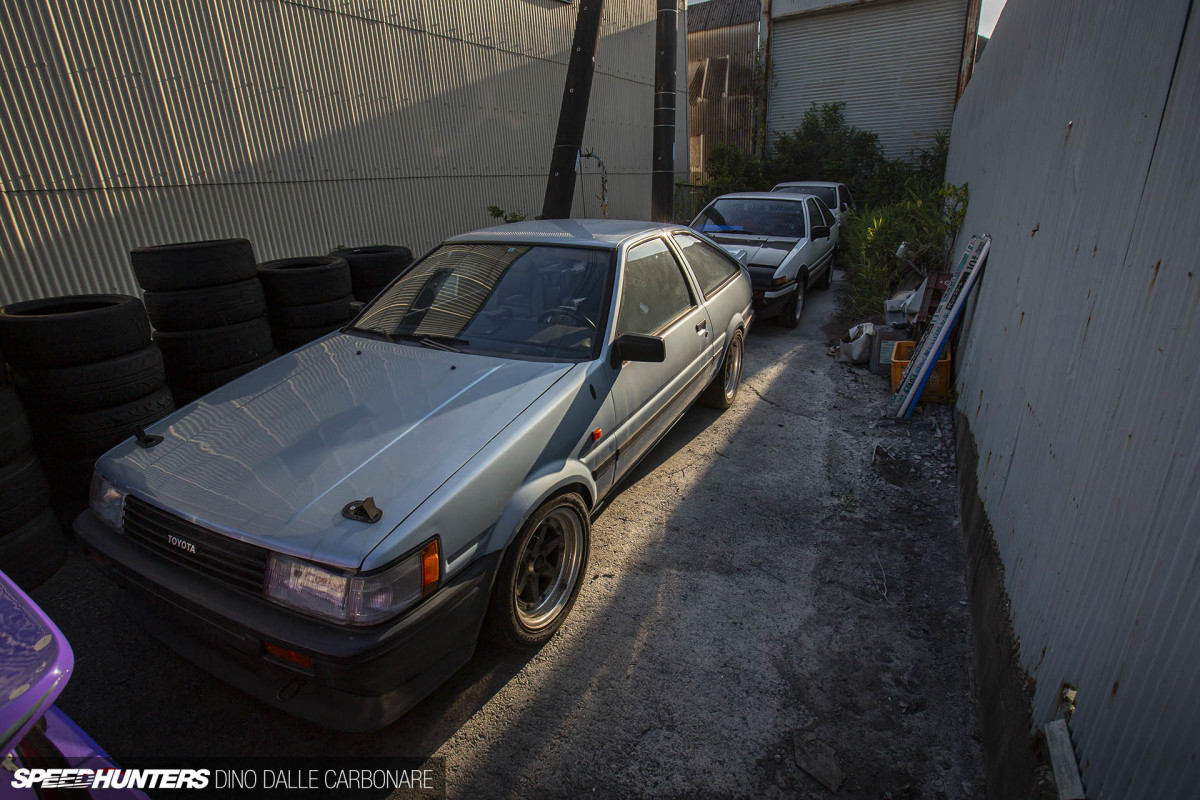
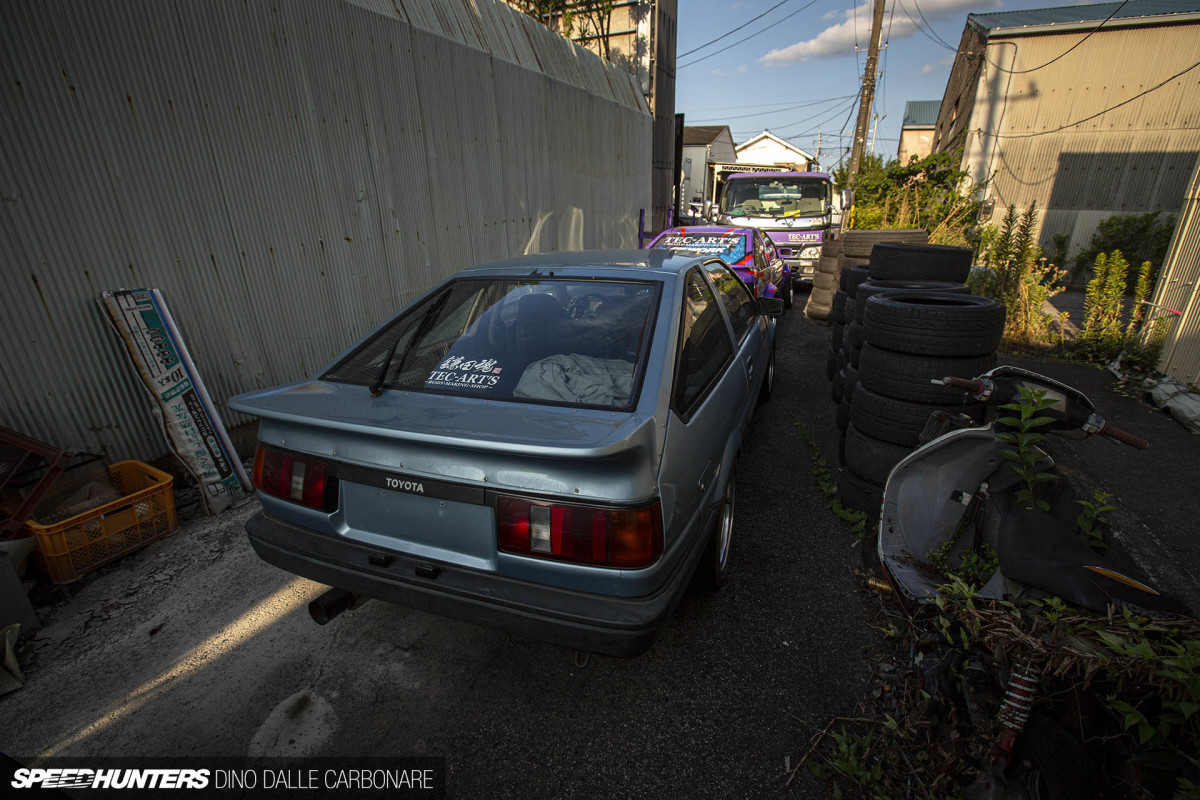
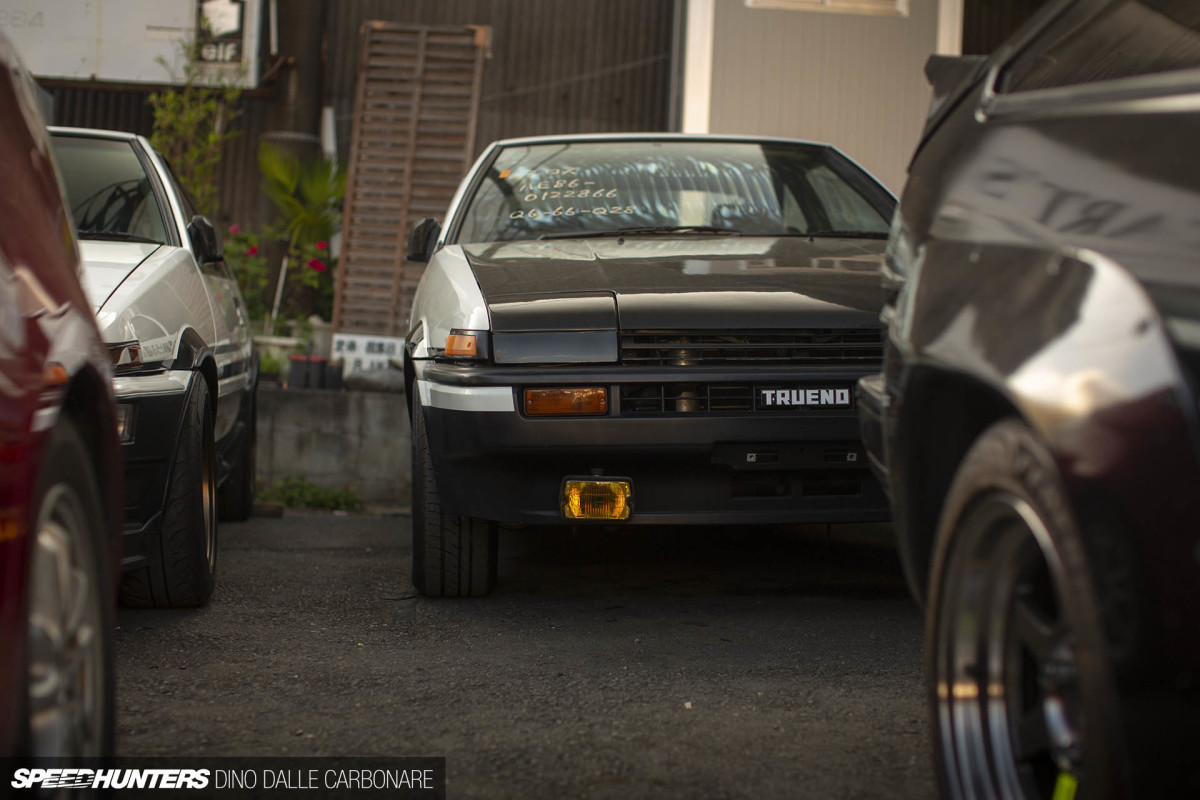

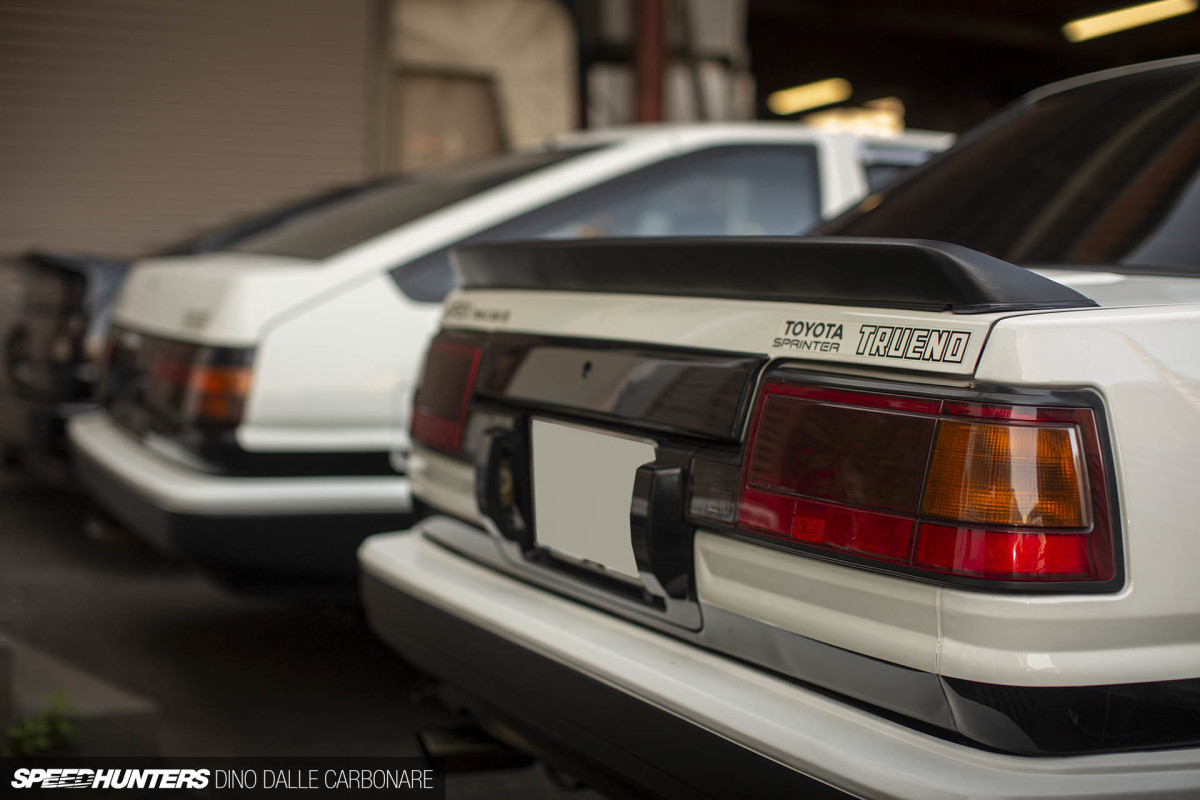

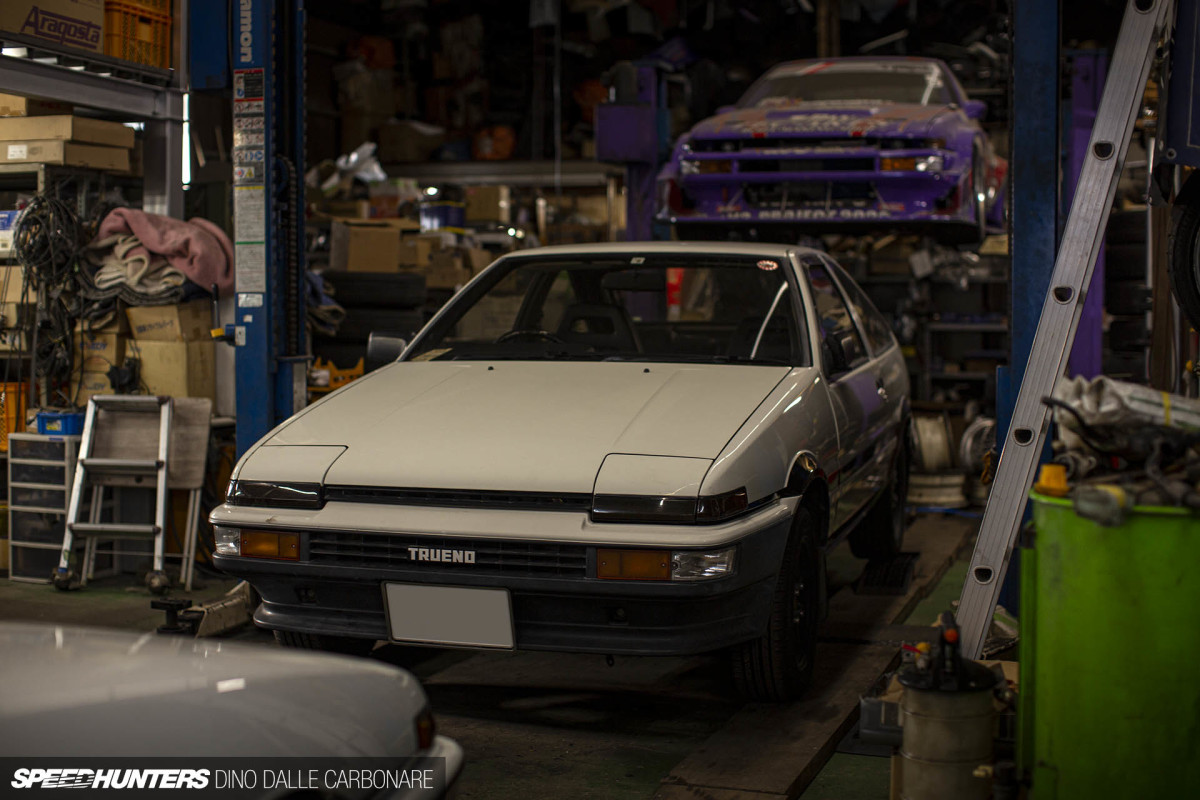
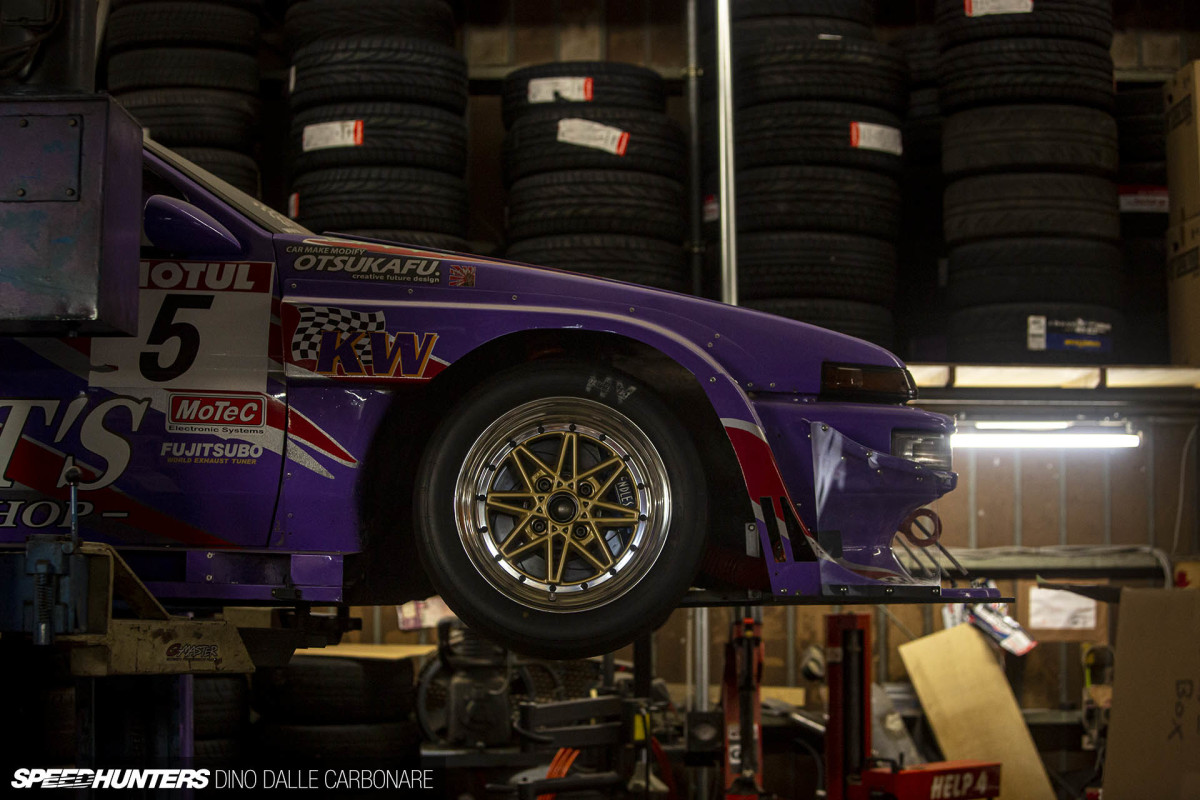
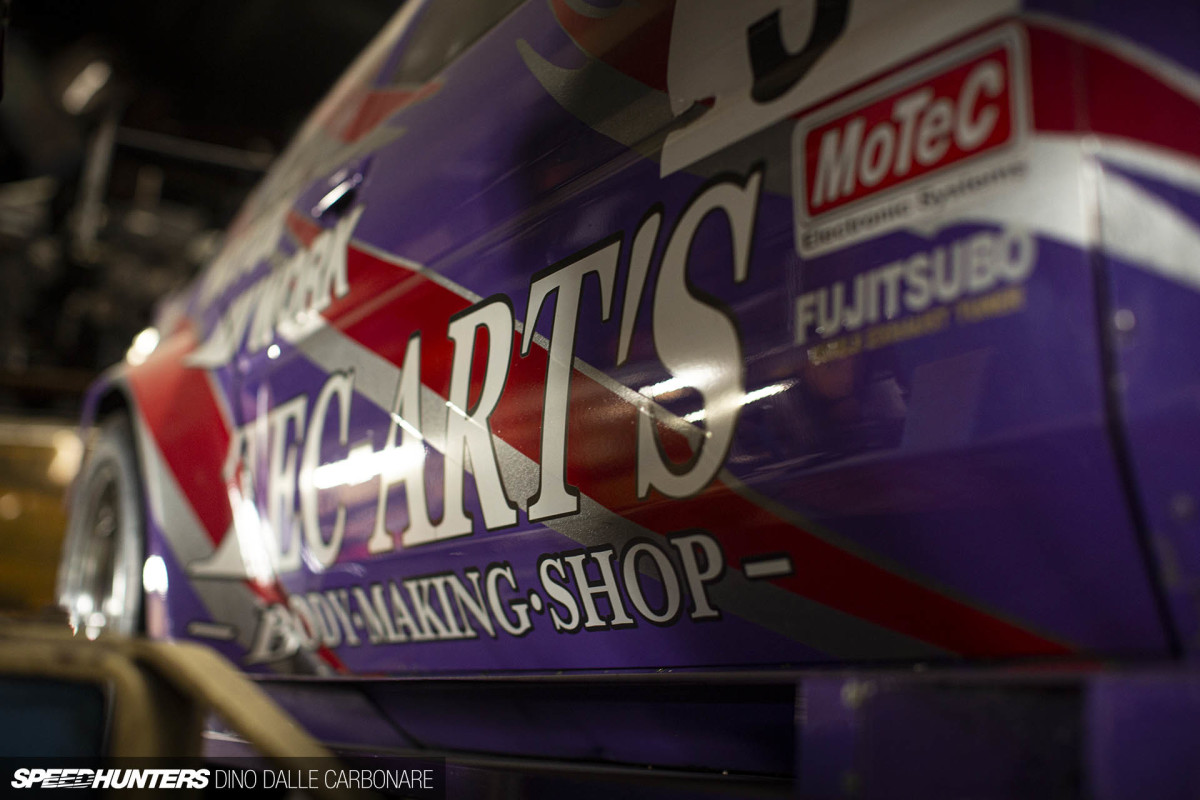
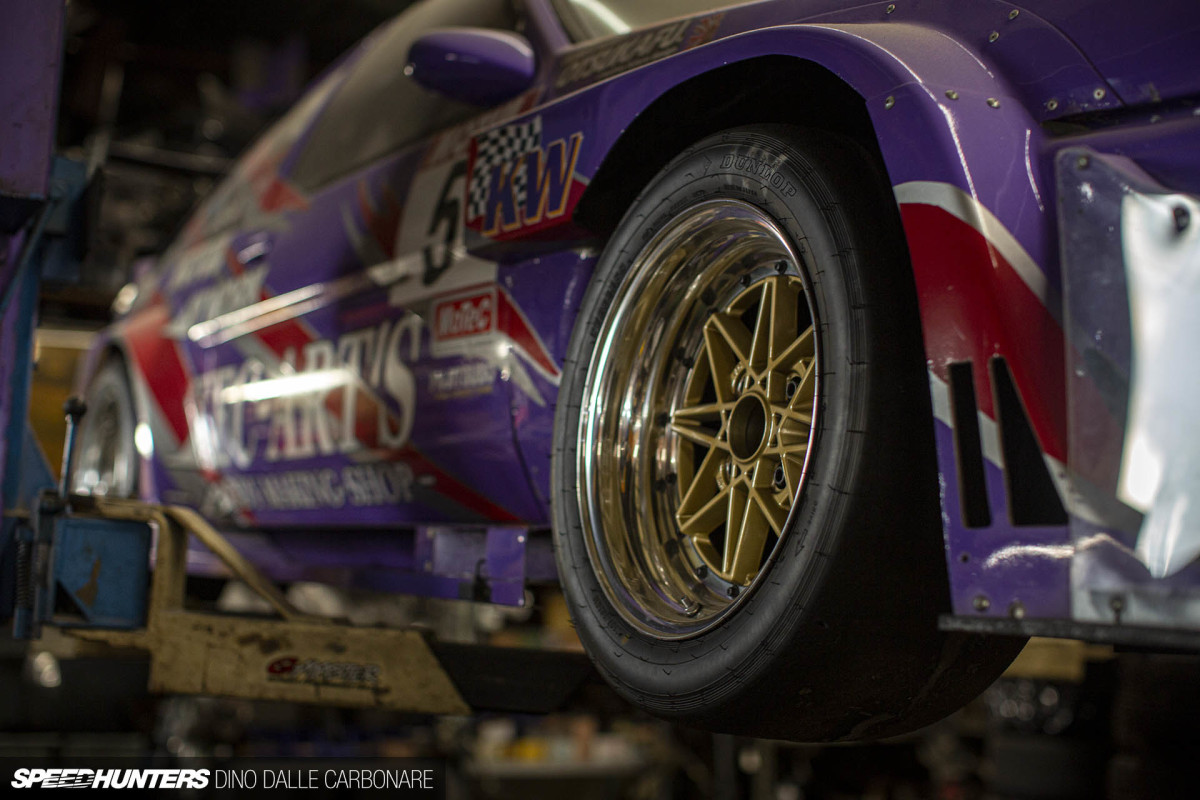
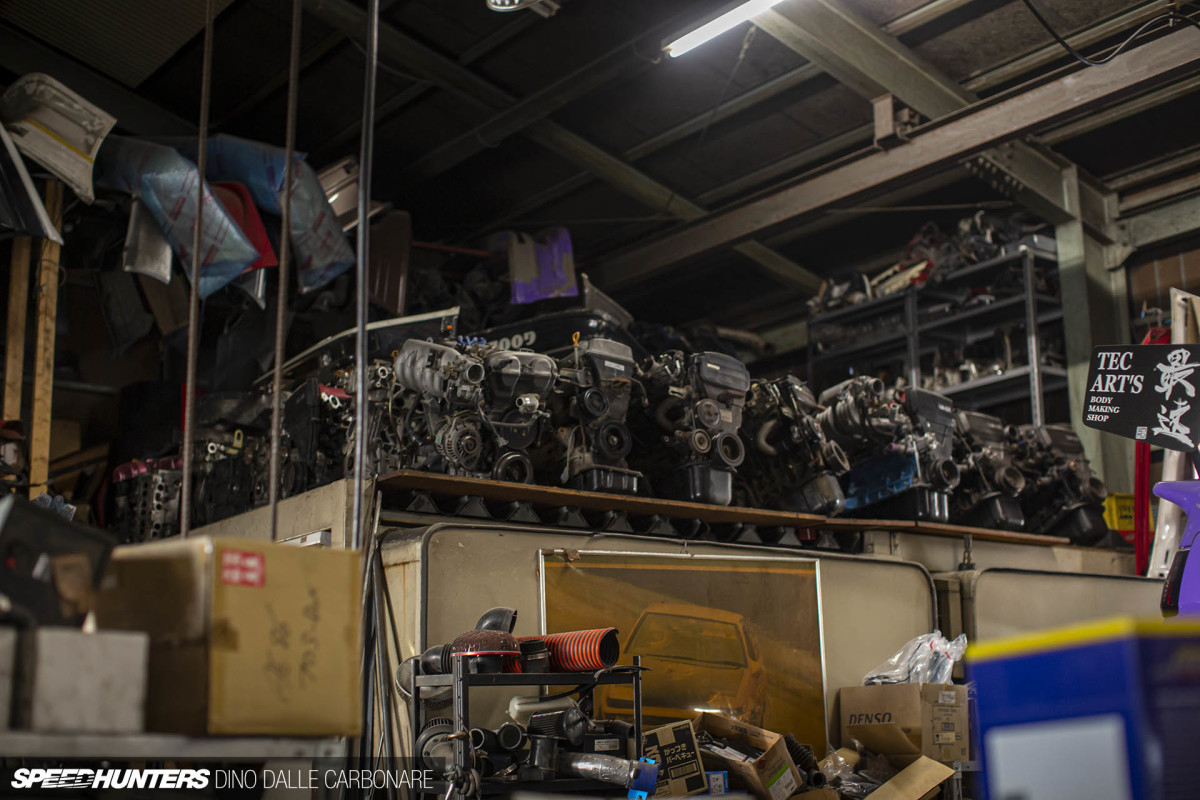
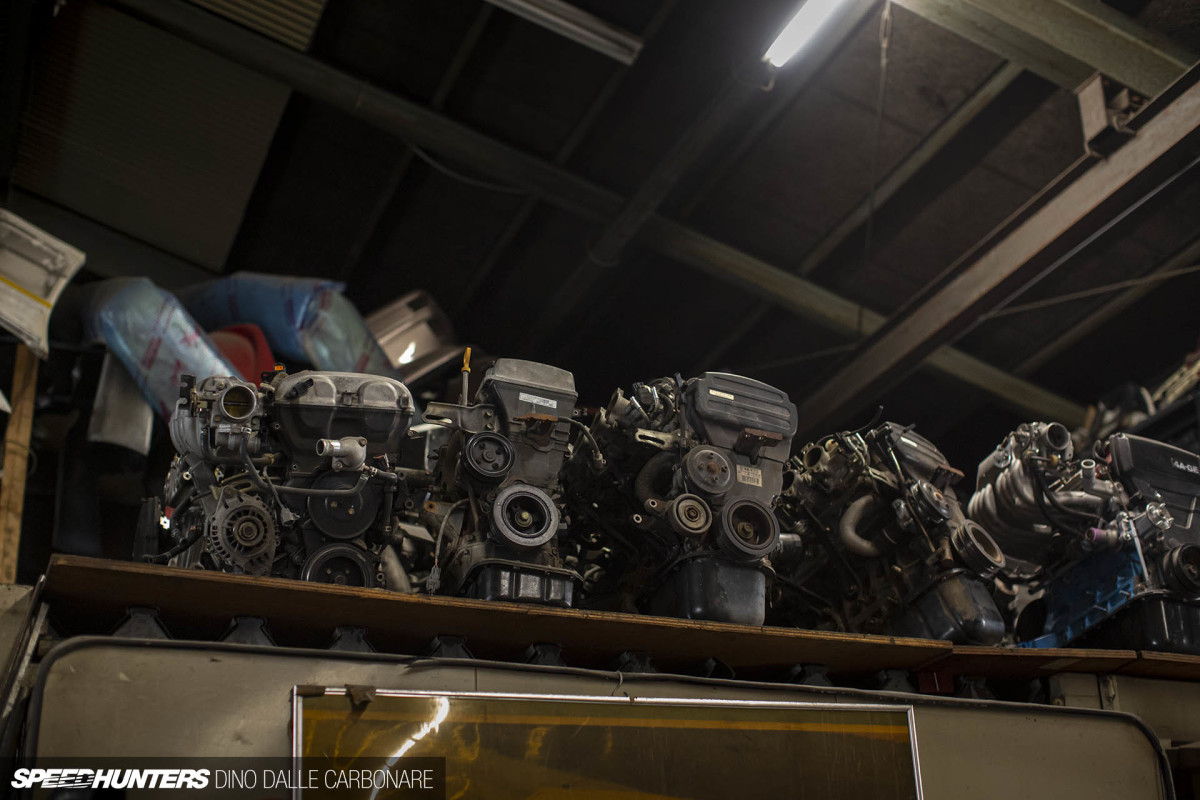
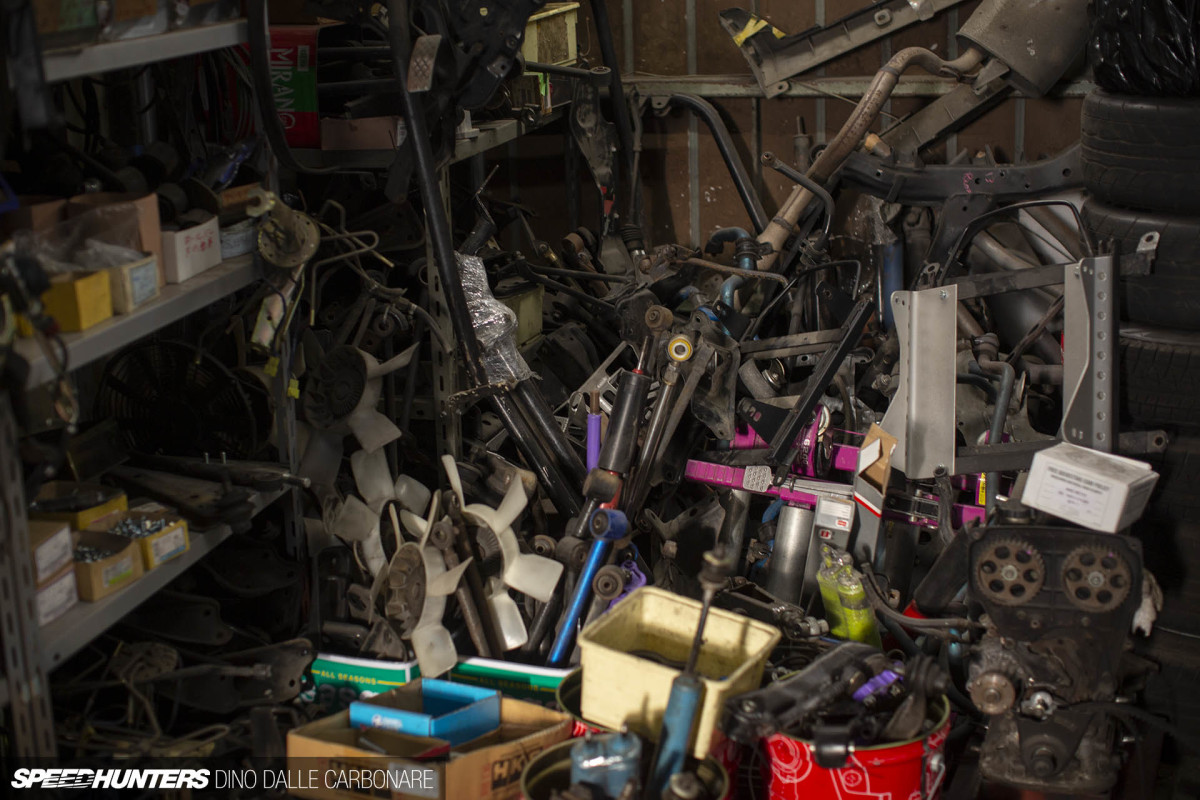
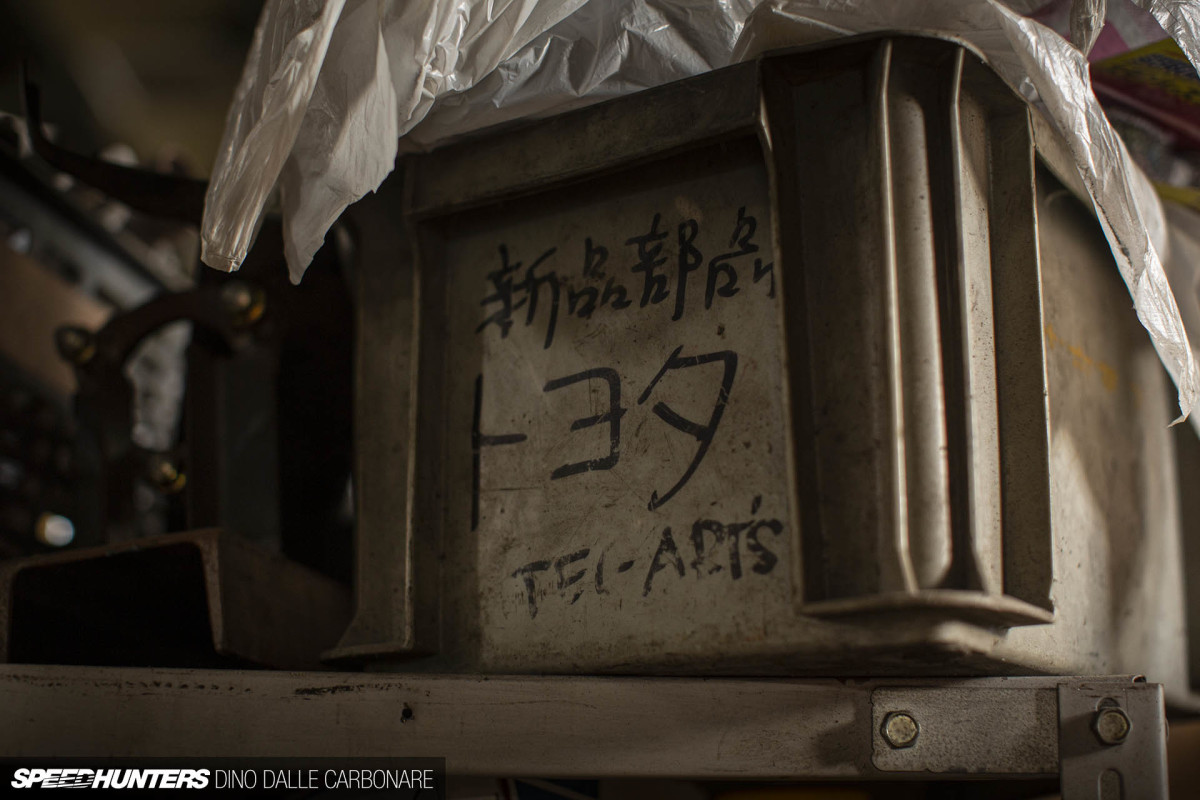
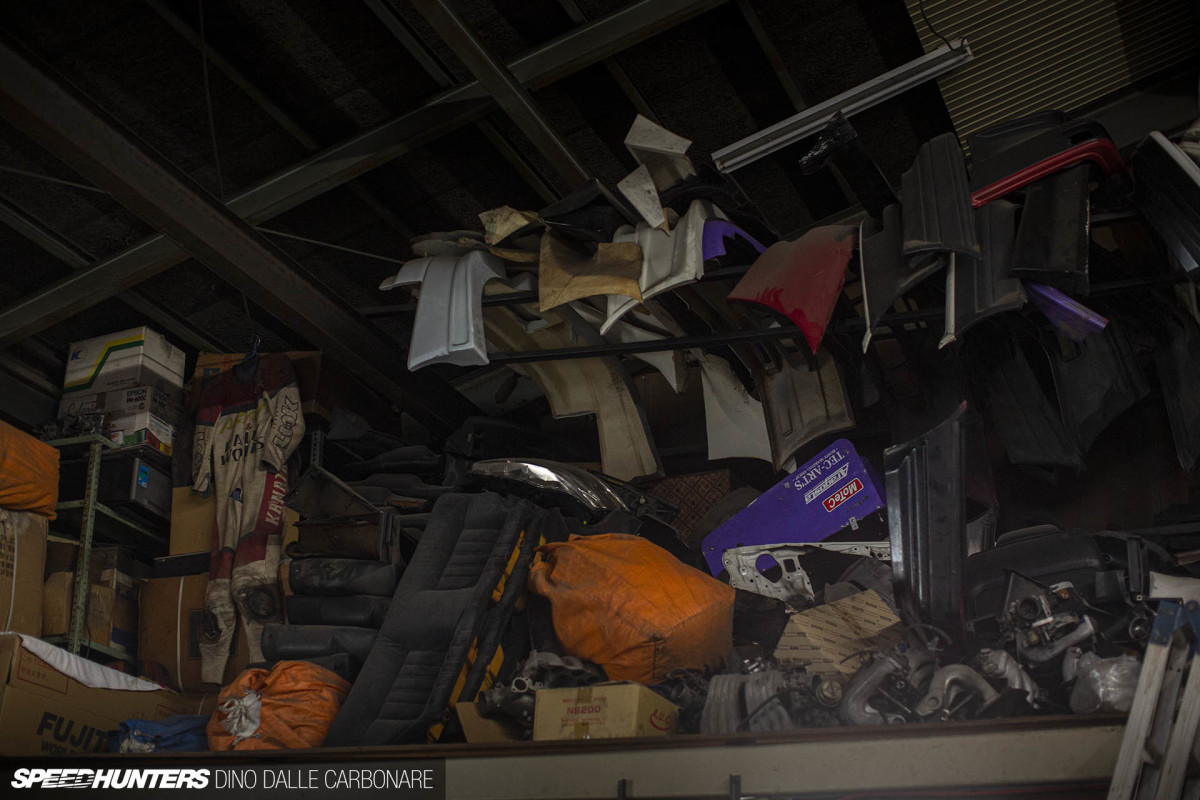
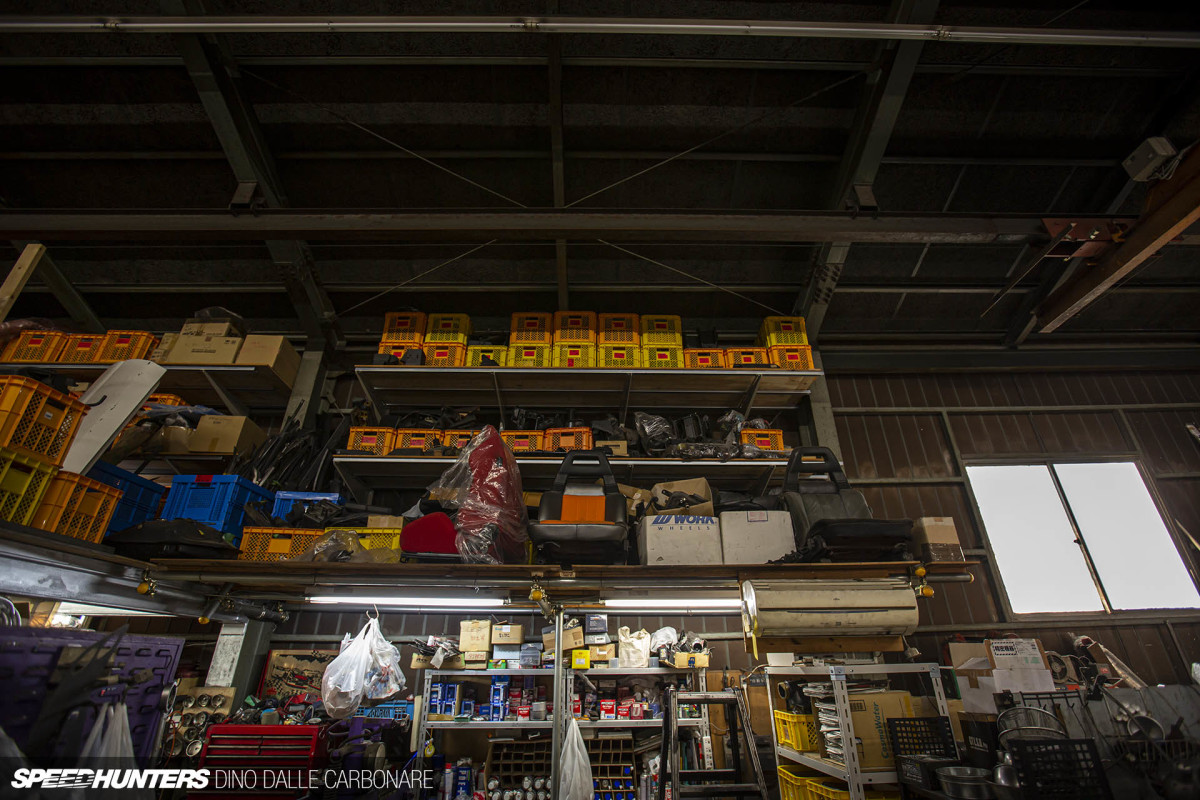
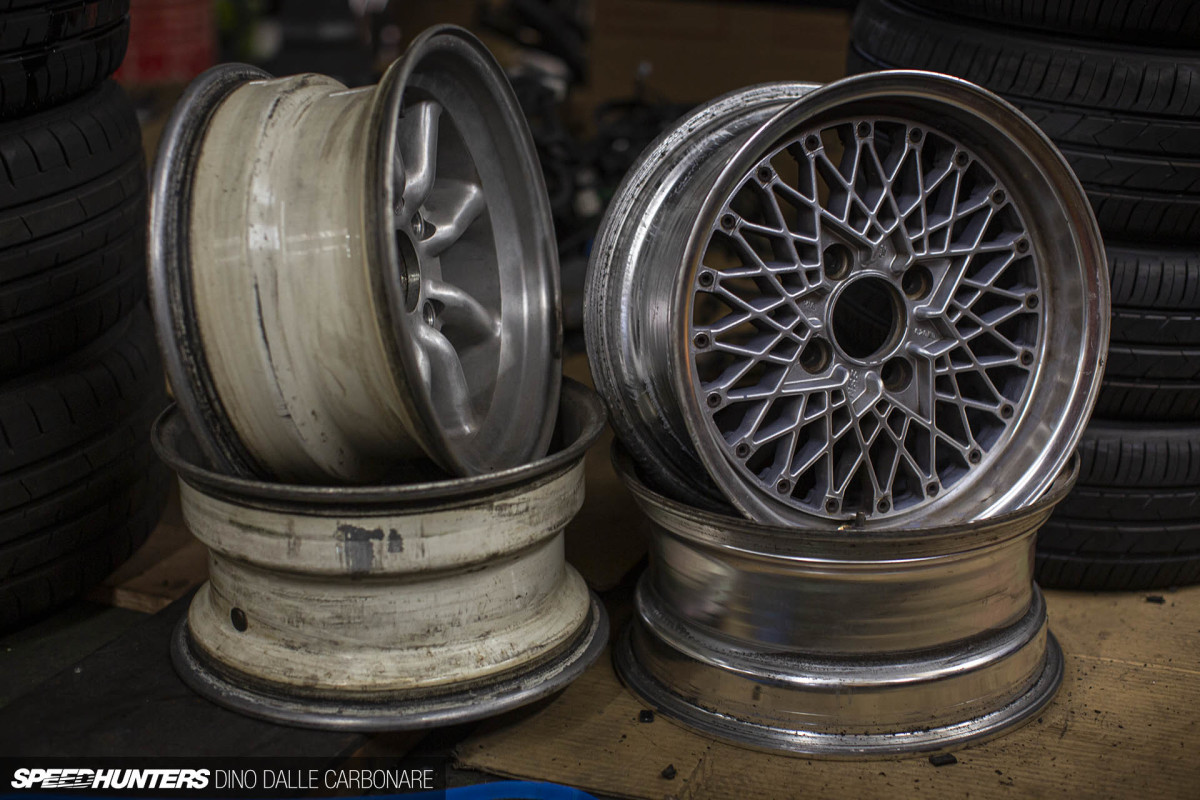





Not one Initial D reference in sight? Impressive.
That sort of media exposure of a particular thing can be a huge problem when you like it for what it is, but people think you like the thing because it was part of some popular media franchise.
I like hachis because they're hachis. I've never actually read or watched Initial D, believe it or not.
Haha that's so overdone seriously
Hatchback or coupe, I like the hachi but I think the blunt Levin nose is stylistically better matched to the car's chunky shape than the pointy Trueno unit.
Not many (if any) other cars came in multiple flavors like this (with different front and rear ends) which is one thing that makes the hachi roku so special IMO.
S13 Silvia/180SX/240SX.
The JDM 80s-90s approach. People are still scratching their heads as to how that sort of production was financially viable .... #bubbleerathings
I am curious about that S15 he has there and what would be his approach to tuning the new ZN6.
I actually did ask about the ZN6. He said it's just refining what's there as trying to go for more would just bring diminishing returns. If you need more power just get a faster car to start off with.
Hello Dino, very cool article and pictures !!! Apparently, the blue LHD Levin with hood pins has been imported from France. But nobody knows exactly how and why this car ended-up at Tec-Art's in Japan. Maybe you know why ?
Uhm I can certainly find out
Would be awesome !
Awesome article! Love shop tours like this. I wonder what the modifications to the ZN6 are?
Just suspension and wheels. The basics.
I've seen plenty specialized shops for those classics. But is there any specialized shops for newer models like Zs, ZN/ZCs, R35s, Subaru, etc.?
Yeah there are, but they do a variety of cars
Great work again Dino. I love these Japanese shop tours. I feel these shops are more relatable to the average weekend warrior with how their shops are laid out with their seemingly random stockpile of parts that actually carefully placed in specific locations.
I've noticed that a lot of the Japanese tuner shop layouts prefer functionality over appearance giving them a more raw look as opposed to more aesthetically pleasing shops such as Type One, Nismo Omori, or even other shops in the US. I love both types of shops, but they draw different emotions from me.
Yeah that's pretty much it, it revolves around the fact that they prefer to be functional and get work done without putting too much importance on looks. But then again they end up oozing character because of it.
I know we have a lot of AE86 articles here on Speedhunter but I'll never get bored of those, especially if it has pics of clean buffed 86s.
lol don't worry, we never get tired either
DINO !!! Always awesome to see a new article from you. I can never get too much 86 coverage and I loved your Tec-Arts coverage. Shop tours are always cool in my book. Additionally, I feel like it's been a while since you covered any Kaido racer/shakoton/Zokusha cars so any future coverage will be appreciated and drooled over. I definitely enjoy seeing Japanese car culture through your eyes, or Through the White Glasses *wink wink*
again Dino wonderful coverage this is the why I keep coming back to speedhunters. I really appreciate getting the feel of the birthplace of some of these iconic cars.
Also just smart on Kamata-san to pivot to restomodding. My own tastes as a car enthusiast have shifted in this direction and it's strangely more satisfying as a owner. Also extra bonus points for having the foresight to stockpile parts. I can already tell in the US 86 parts are becoming fewer and farther between.